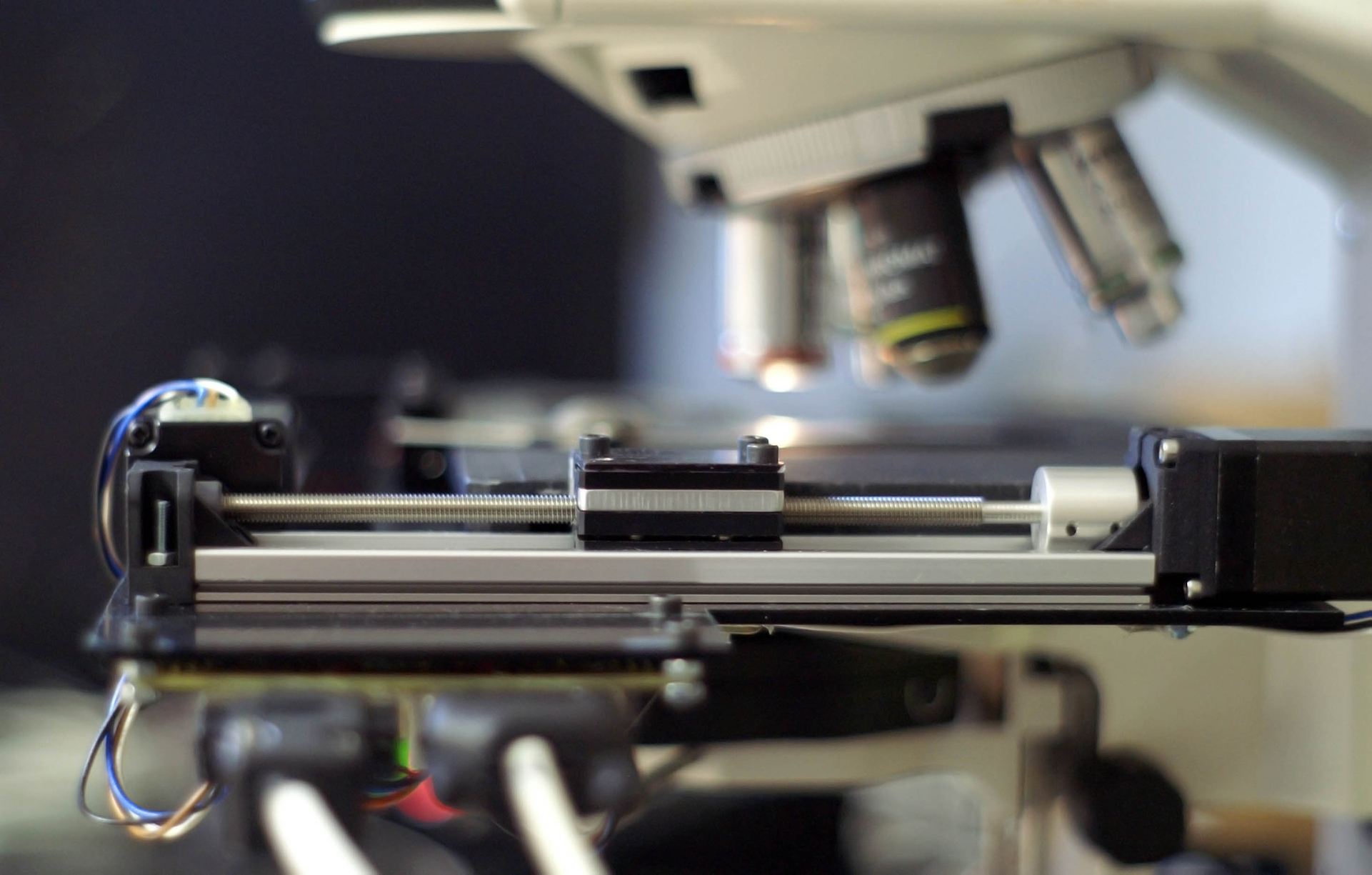Original source: http://www.microscopiaoberta.com/?p=184&lang=ca

It’s a classic for customers to ask me about digital cameras with ‘the more megapixels, the better.’ However, I always respond the same when they ask me this question:
The separating power (A.K.A. resolution) of a microscope is not given by the camera, is given by the objective of the microscope.
However, in the market, there are microscope cameras ranging from 1 to 32 megapixels, with 5 and 10 megapixels being common. But if the resolving power/resolution is not provided by the camera…
How many pixels are needed to work with microscopy?
Well, here I will present the my propouse of mathematical demostration, being as ‘objective’ as possible.
First point – The resolving power (A.K.A. Resolution) of a microscope
To determine HOW MANY pixels we need, we first need to know the resolving power of our microscopes.
This parameter is mainly determined by the Numerical Aperture of our objectives and is defined by the following simplified formula :
Form 1 Resolving Power [1]
Where:
Second point – Nyquist’s Theorem
Now we have the resolution of our objectives, but how does this translate into pixels?
Well, for this, we have Nyquist’s Theorem [2], which will determine the IDEAL pixel size for each of our objectives. I won’t go into depth on the theorem; for more information, consult Wikipedia 
A formula to calculate the IDEAL pixel size in microscopy is:
Form 2 Pixel Ideal Size µm [3]
Where:
Now we add a column to our Resolving Power table with the Ideal Pixel column in µm:
Table Dimensions Pixel Size Ideal µm [3]
Third point – Camera Sensor Size
Now we know what dimensions our pixels need to have to resolve the images from our microscopes in maximum detail… but (there’s always a ‘but’) how do we translate the size of 1 pixel into the resolutions we use with our cameras?
The simplest way to calculate is:
Form 3 Dimension Pixel Ideal
Where we consider that pixels are SQUARE.
For a theoretical sensor with a 1-inch diagonal and a 4/3 aspect ratio, we obtain:
Table Maximum Megapixels For each magnification
Above the MegaPixels value obtained, we will be oversampling the image and NOT OBTAINING MORE INFORMATION, just bigger/larger spots with more pixels but not more ‘resolved’ images/information.
Below this value, we do LOSE INFORMATION, and it is not recommended at all (if we can avoid it, of course!).
An important detail to consider here is that our sensor doesn’t have ANY additional optical element that could modify the dimensions of the sensor.
In the case that our microscope has a 0.63x or 0.5x adapter for the camera, we will need to recalculate the sensor size with the following formula:
Form 4 RealSensorSize/Magnificaion Adapter camera
Example of a 1/3″ with a 0.5x optical camera adapter:
Let’s compare the results of the maximum MegaPixels with and without the optical camera adapter:
Taula MaximumMegaPíxels for Sensor’s Càmera 1/3” whit 1x adapter:
Taula MegaPíxels Màxims Càmera 1/3” amb adaptador 0,5x
Here we see the dual utility of optical adapters for cameras in microscopes because, in addition to increasing the ‘field’ of our image, they also allow us to obtain images at higher ‘megapixels,’ at the cost of losing magnification, of course!
Notes:
This Ideal Pixel dimension and all the tables presented so far correspond to a MONOCHROME sensor.
RGB camera sensors, which usually have a color filter with a Bayer pattern, the usable pixel does NOT correspond to the pixel size provided by the manufacturer because it is necessary to apply DeMosaicing [4] (color interpolation) to obtain a pixel with the correct RGB color, altering the effective pixel size according to the DeMosaicing method/algorithm applied, with typical factors between 1.25x and 2x depending on the method used.
Thanks for your attention
F.Xavier Gómez
References
[1] https://en.wikipedia.org/wiki/Optical_resolution
[2] https://en.wikipedia.org/wiki/Nyquist-Shannon_sampling_theorem
[3] http://www.microscopyu.com/tutorials/java/digitalimaging/pixelcalculator/
[4] https://en.wikipedia.org/wiki/Demosaicing
All information published here is under the license Creative Commons Attribution-NonCommercial 4.0 International License.
